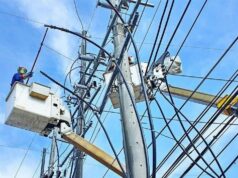THE listed operator of Philippine Airlines (PAL) saw a 16.79% cut in its losses in the second quarter driven by higher passenger volumes and other revenues.
PAL Holdings, Inc. saw its net attributable loss down to P290.817 million from last year’s P349.5 million despite recording higher expenses.
Its total revenue reached P38.34 billion, up 13.9% from the P33.66 billion it posted last year. It said in a regulatory filing that the growth is “primarily due to the increase in passengers and cargoes carried as a result of the increase in number of flights operated as well as improvement in yields.”
The flag carrier’s total expenses grew to P38.67 billion from last year’s P33.21, surging 16.4% because of the additional flights PAL opened.
“The increase was primarily due to higher flying operations, aircraft and traffic servicing, reservations and sales, passenger service and maintenance expenses,” it said.
The rising price of fuel continues to affect the company’s business, hitting it with a 32.8% increase — P3.2 billion — in flying operations expenses. It said that the per-barrel price of fuel surged to $93.92 this year from $73.89 last year.
PAL President Jaime J. Bautista previously told reporters the airlines consumes up to 11 million barrels of fuel every year.
PAL saw its net attributable loss from January to June go up 7.19% to P1.398 billion from last year’s P1.304 billion due to higher losses in the first quarter.
Mr. Bautista told reporters in June that the company is hopeful to end the year with a “modest profit,” as it seeks to impose a fuel surcharge, having made an application at the Civil Aeronautics Board (CAB).
He also said last month that the market is growing, keeping the company hopeful that it would achieve this goal by the end of the year.
PAL reported a net loss of P7.3 billion in 2017 due to higher expenses brought by rising fuel prices and aircraft and passenger expenses. It sank further in the first quarter of 2018, to P1.1 billion from P954 million year on year.
The CAB said in July that it is working on a “surcharge matrix” which will guide airlines in adjusting their prices based on the cost of fuel. PAL and Cebu Pacific have both applied for fuel surcharges with the CAB due to rising fuel expenses. — Denise A. Valdez



